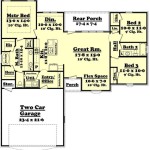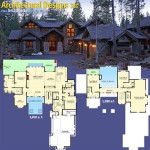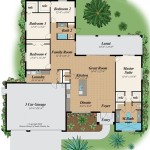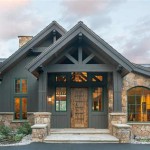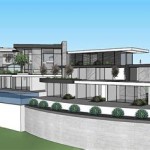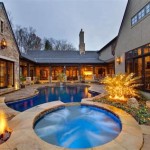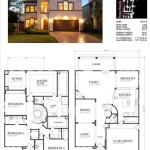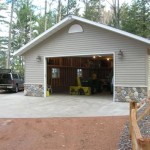House Plans With Large Back Porch: Extending Living Space Outdoors
The concept of home extends beyond the interior walls of a house. For many, the backyard and, specifically, the back porch, represents an invaluable extension of the living space. House plans incorporating large back porches are gaining popularity as homeowners seek to maximize their enjoyment of the outdoors, create inviting spaces for relaxation and entertainment, and enhance the overall value of their property. This article explores the key features, benefits, and considerations involved in selecting house plans with large back porches, providing a comprehensive overview of this increasingly sought-after design element.
A large back porch is more than just a platform outside the back door. It's a deliberate design choice aimed at blurring the lines between indoor and outdoor living. These porches are typically designed to accommodate comfortable seating, dining areas, and even outdoor kitchens, effectively creating an outdoor room. They often feature weather-resistant materials, thoughtful lighting, and privacy features to enhance their usability and appeal.
Defining a Large Back Porch: Dimensions and Functionality
While the definition of "large" can be subjective, a back porch is generally considered large when it offers ample space for multiple activities or a significant number of people. In terms of dimensions, a large back porch typically extends at least 12 feet from the house and spans a considerable portion of the back facade. This provides enough room for a seating area, a dining table, and possibly even an outdoor kitchen or bar area, without feeling cramped.
Functionality is paramount to the design of a large back porch. It should be easily accessible from the main living areas of the house, ideally through large sliding glass doors or French doors that promote seamless transitions between indoors and out. The layout should be carefully considered to maximize flow and create distinct zones for different activities. For example, a portion of the porch might be dedicated to dining, another to lounging, and another to cooking.
Material selection plays a crucial role in the durability and aesthetics of a large back porch. Weather-resistant materials such as composite decking, treated lumber, and stone or brick pavers are commonly used for the flooring. For the porch structure, options include wood, metal, or a combination of both. The choice of materials should complement the overall architectural style of the house and withstand the local climate conditions.
Benefits of Incorporating a Large Back Porch into House Plans
The advantages of incorporating a large back porch into house plans are numerous, ranging from enhanced lifestyle to increased property value.
One of the primary benefits is the expanded living space it provides. A large back porch effectively adds another "room" to the house, increasing the overall square footage available for living and entertaining. This is particularly valuable for families who enjoy spending time outdoors or frequently host gatherings.
A large back porch also encourages a healthier and more active lifestyle. It provides a comfortable and accessible space to enjoy the outdoors, whether it's for relaxing with a book, exercising, or simply enjoying the fresh air. This can be particularly beneficial for individuals who spend a significant amount of time indoors.
Furthermore, a well-designed and maintained large back porch can significantly enhance the aesthetic appeal of a house. It adds visual interest to the exterior and creates a welcoming and inviting atmosphere. This can be particularly appealing to potential buyers, increasing the resale value of the property.
Finally, a large back porch can provide a buffer zone between the interior of the house and the surrounding landscape. It can help to regulate temperature, reduce noise levels, and provide privacy from neighbors. This makes the house more comfortable and enjoyable to live in.
Key Considerations When Designing a House Plan with a Large Back Porch
Designing a house plan with a large back porch requires careful planning and consideration of various factors to ensure that the porch is functional, aesthetically pleasing, and meets the specific needs of the homeowners.
The first and perhaps most important consideration is the orientation of the house and the porch. The ideal orientation will maximize sunlight exposure during the cooler months and provide shade during the warmer months. This can be achieved by orienting the porch to face south or east, depending on the local climate. It is also essential to consider the prevailing winds and design the porch to minimize exposure to strong winds.
Another important consideration is the privacy of the porch. Depending on the location of the house and the proximity of neighbors, it may be necessary to incorporate privacy features such as screens, hedges, or fences. These features can help to create a more secluded and intimate space.
The design of the porch should also complement the overall architectural style of the house. The materials, colors, and finishes used on the porch should be consistent with the rest of the house. This will create a cohesive and harmonious look. For example, a modern house might feature a sleek and minimalist porch with clean lines and simple materials, while a traditional house might feature a more ornate porch with decorative details and natural materials.
Accessibility is another critical consideration. The porch should be easily accessible from the main living areas of the house, ideally through large sliding glass doors or French doors. The porch should also be accessible to people of all abilities, with ramps or gently sloping walkways if necessary.
Finally, it is essential to consider the budget when designing a house plan with a large back porch. The cost of building a large back porch can vary significantly depending on the size, materials, and features. It is important to set a realistic budget and work with a qualified architect or builder to ensure that the porch is built to the highest standards without exceeding the budget.
Lighting is not just about illumination; it's about creating ambiance. Consider incorporating a mix of ambient, task, and accent lighting to create a warm and inviting atmosphere. String lights, recessed lighting, and outdoor lamps can all be used to achieve different effects. Think about the types of activities that will take place on the porch and choose lighting accordingly.
Furniture selection deserves careful consideration. Choose furniture that is both comfortable and durable, and that complements the overall style of the porch. Consider the materials, colors, and patterns carefully. Wicker, teak, and aluminum are all popular choices for outdoor furniture. Don't overcrowd the porch with too much furniture. Leave plenty of space for movement and circulation.
Adding outdoor appliances, like grills, smokers, refrigerators, and sinks, transforms a simple porch into a full-fledged outdoor kitchen. When planning for an outdoor kitchen, consider the placement of utilities, such as gas lines, water lines, and electrical outlets. A built-in grill is a popular option for outdoor kitchens. It provides a dedicated cooking space and can be customized to fit the specific needs of the homeowner. A refrigerator can be used to keep beverages and food cold, while a sink provides a convenient place to wash dishes and prepare food.
Protecting the porch from the elements is crucial for year-round enjoyment. Consider adding a roof or awning to provide shade and shelter from the rain. Screens can be used to keep out insects, while curtains can provide privacy and block out the sun. A fireplace or outdoor heater can extend the use of the porch into the cooler months. A ceiling fan can help to keep the porch cool during the summer months. These additions increase the usability of the back porch. Proper drainage is essential to prevent water from accumulating on the porch. Ensure that the porch is sloped away from the house and that there are adequate drainage outlets.
Landscaping plays a vital role in creating a welcoming and inviting outdoor space. Consider adding plants, shrubs, and trees to soften the edges of the porch and create a sense of privacy. Choose plants that are appropriate for the local climate and that require minimal maintenance. Create a focal point, such as a fountain or sculpture, to add visual interest. Mulch can be used to suppress weeds and retain moisture in the soil. Use stepping stones or pavers to create pathways through the landscaping. This is a design element that should not be overlooked.
Integrating technology into the design is something that can enhance the overall experience. Consider adding a sound system, a television, or a Wi-Fi extender to the porch. This will allow homeowners to enjoy their favorite music and movies outdoors. Smart home devices can be used to control the lighting, temperature, and other features of the porch. Technology features can be seamlessly integrated into the design of the porch, creating a modern and convenient outdoor living space.

Modern Country Home Plan With 4 Beds And A Large Back Porch Fireplace 860060mcd Architectural Designs House Plans

New American House Plan With Open Floor And Large Covered Patio In Back 62377dj Architectural Designs Plans

Plan 46041hc Hill Country Home With Massive Porch Homes Ranch Style House Plans

Your Guide To House Plans With Screened In Porches Houseplans Blog Com
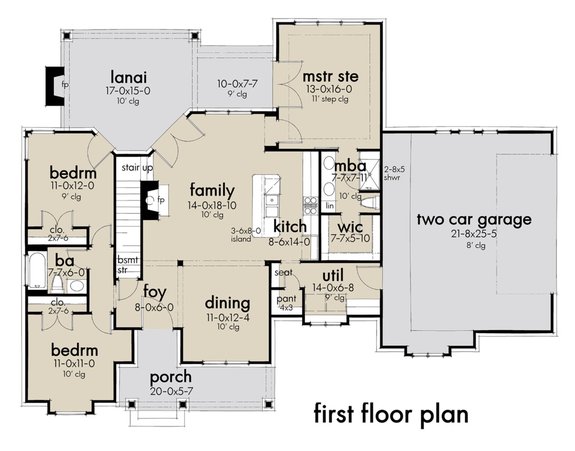
Minimalist Floor Plans With Porches Houseplans Blog Com

House Plan 51583 Southern Style With 1841 Sq Ft 3 Bed 2 Bath

Plan 4413 Design Studio House Blueprints Plans Farmhouse New

Southern Living Dreamy House Plans With Front Porches Blog Dreamhomesource Com

Southern Living Dreamy House Plans With Front Porches Blog Dreamhomesource Com

House Plans With Porches Front Back Screened More

